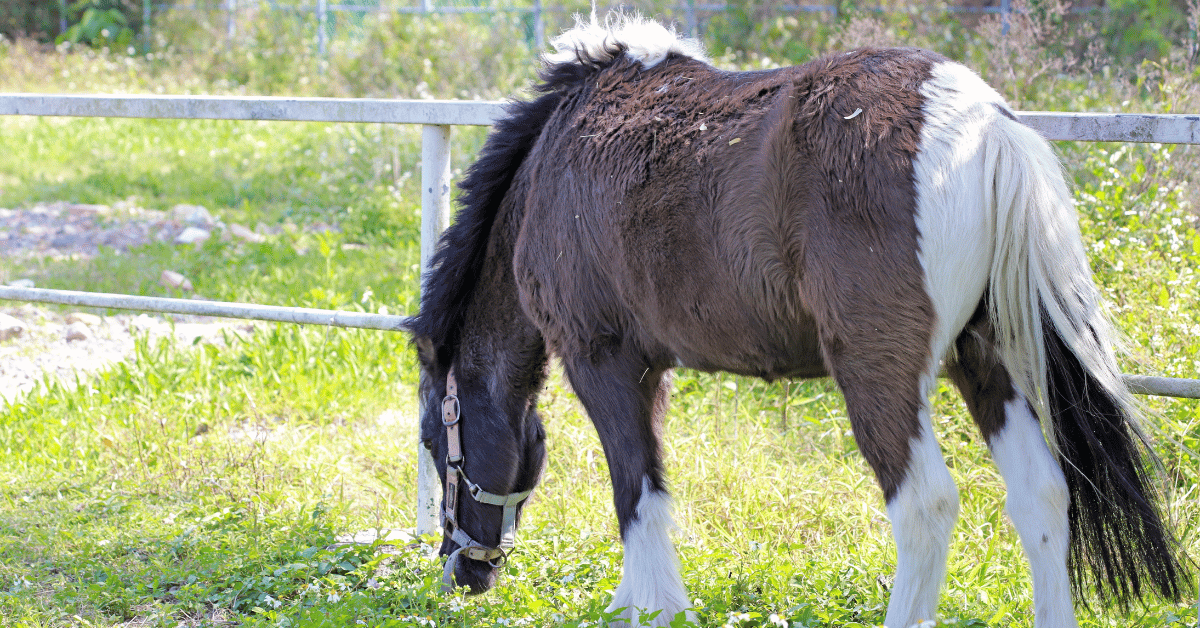How to Recognize PPID in a Horse
PPID stands for Pituitary Pars Intermedia Dysfunction, a disorder affecting the function of the pituitary gland. This condition was formerly known as Cushing’s disease. In horses with PPID, the pituitary gland becomes overactive and/or enlarged. This gland is a small hormone-producing organ located near the brain.
Diseases

3 August '25 • 1 min reading time
It is estimated that PPID occurs in about 15% of horses over the age of 15. The symptoms seen with PPID are partly caused by imbalances in various hormone levels, and partly by the increased pressure the enlarged pituitary gland puts on surrounding areas of the brain.
Symptoms
One of the most well-known symptoms of PPID is the development of a long, curly coat. In some cases, the coat even changes color! In addition, about a quarter of horses with PPID also develop laminitis. Other symptoms include: a pot belly and bald back, lowered immunity, excessive sweating, drinking and urinating, and an increased appetite. Fat deposits above the eyes are also common. As PPID progresses, many horses develop insulin resistance or diabetes.
Detecting PPID
In the early stages, PPID often presents with vague or subtle symptoms. These might include reduced performance, decreased willingness to work, and lower alertness. Delayed shedding of the winter coat can also be an indicator. A blood test can be performed at home by a veterinarian to diagnose PPID. However, if the disease is still in its early phase, the results may be inconclusive. In that case, a series of blood tests at a veterinary clinic may be necessary. It can also be important to check your horse’s blood sugar levels, which provide insight into the risk of laminitis.
Managing PPID
Unfortunately, PPID cannot be cured. However, it is usually possible to treat and manage the condition. You can also prevent or reduce complications such as laminitis. This means that many horses with PPID can still enjoy their senior years. It’s important that your horse follows a healthy diet, adapted to any insulin resistance. This means: less sugar, plenty of fiber, and potentially herbs for support. You should also take care of wounds quickly and provide medication if necessary, as your horse’s immune system may be compromised. Additionally, regular farrier visits are essential, so that any changes can be spotted early and laminitis symptoms can be addressed right away.
Sources:
Website Faculteit Diergeneeskunde, Universiteit Utrecht https://diergeneeskunde.nl/kennisbank/ppid-ziekte-van-cushing/


